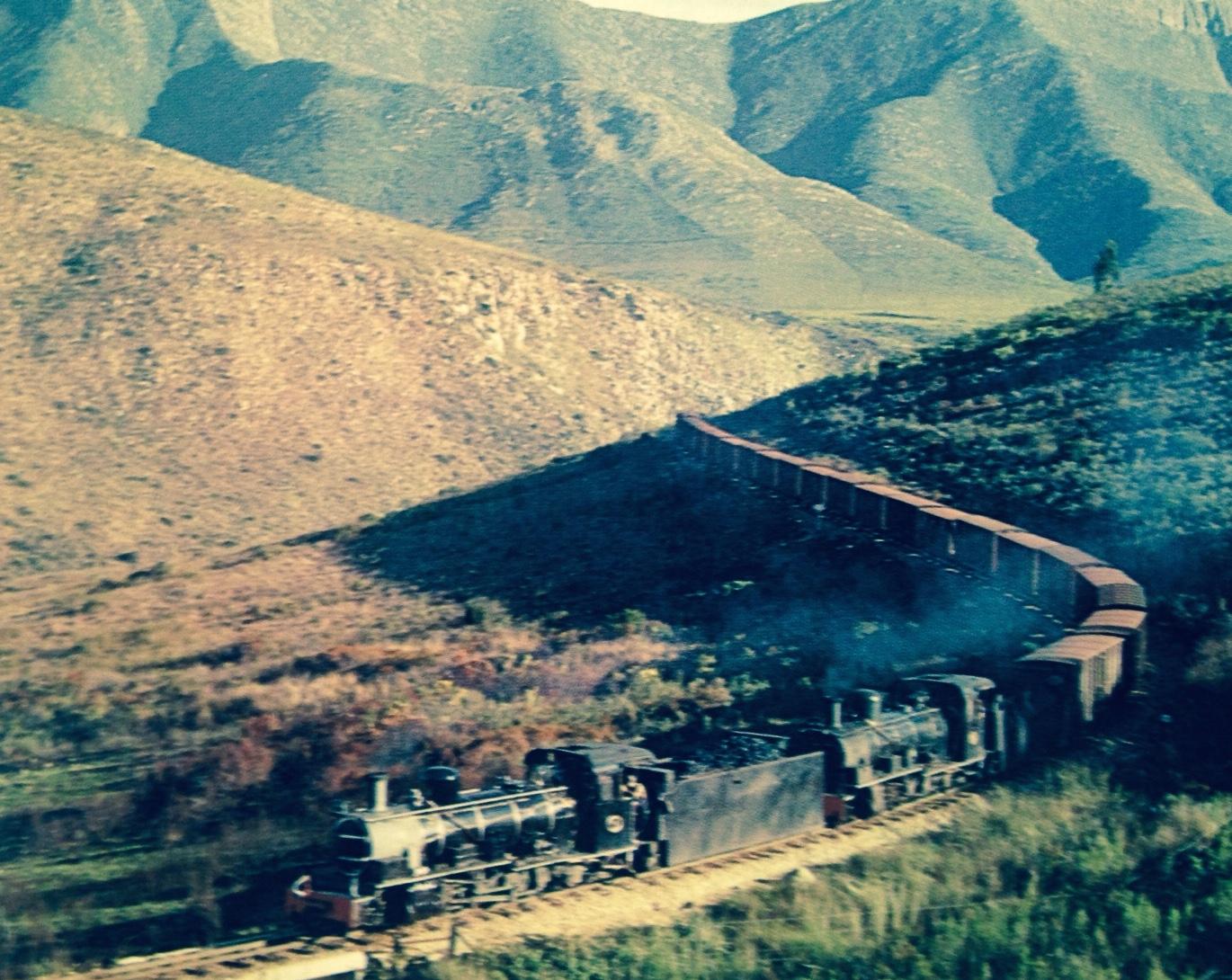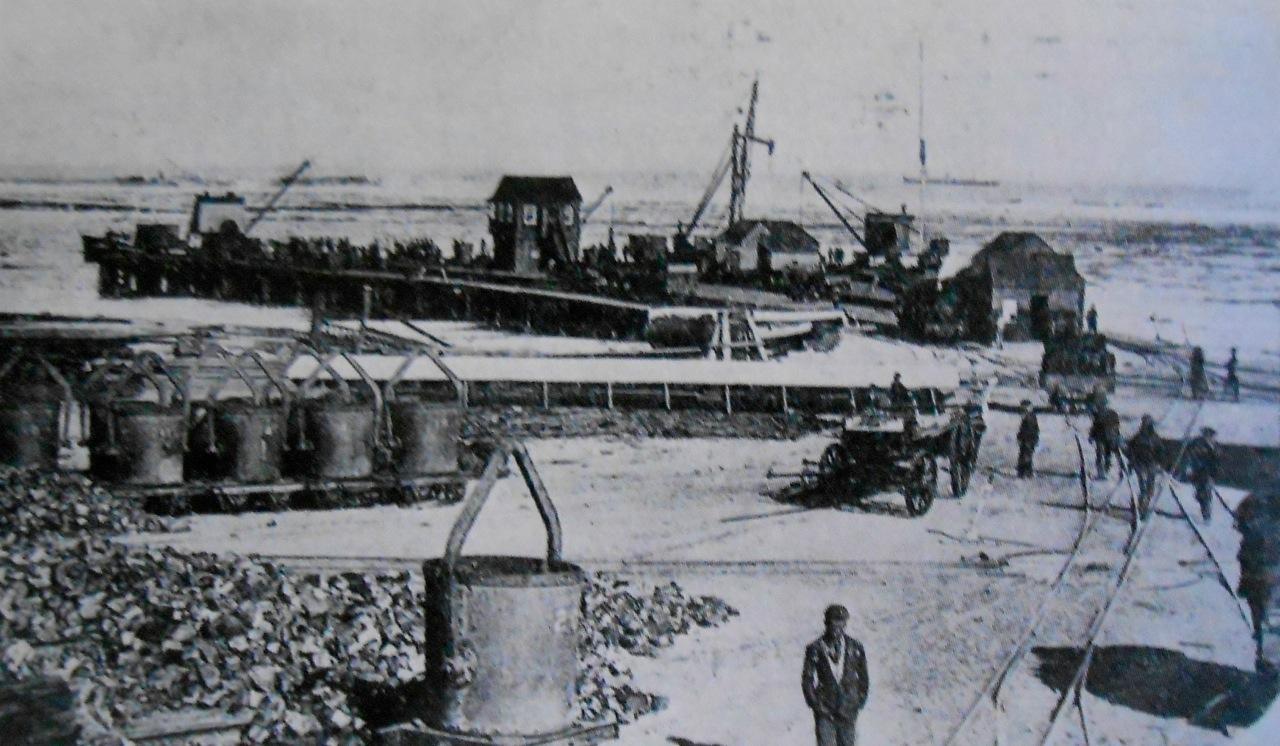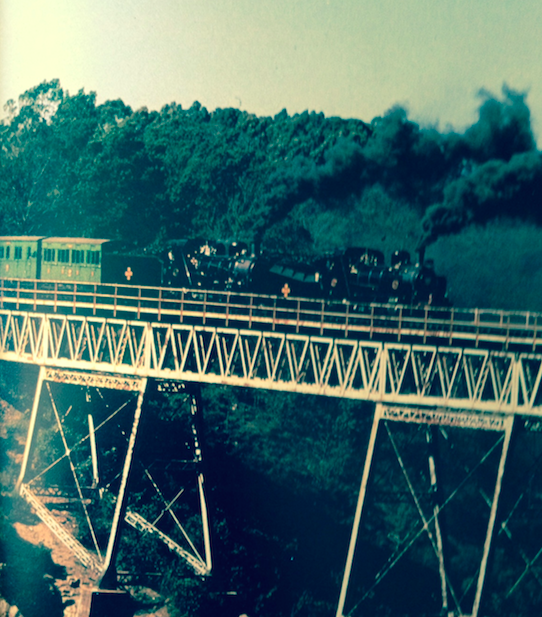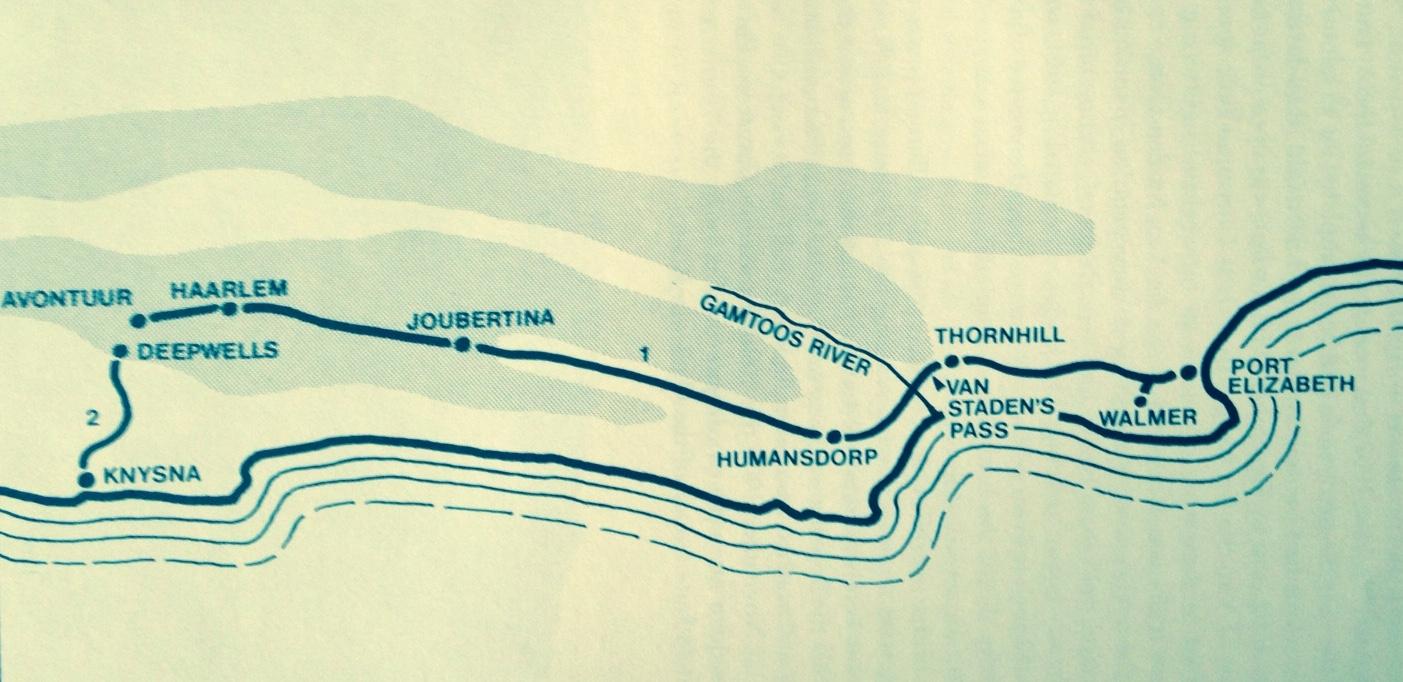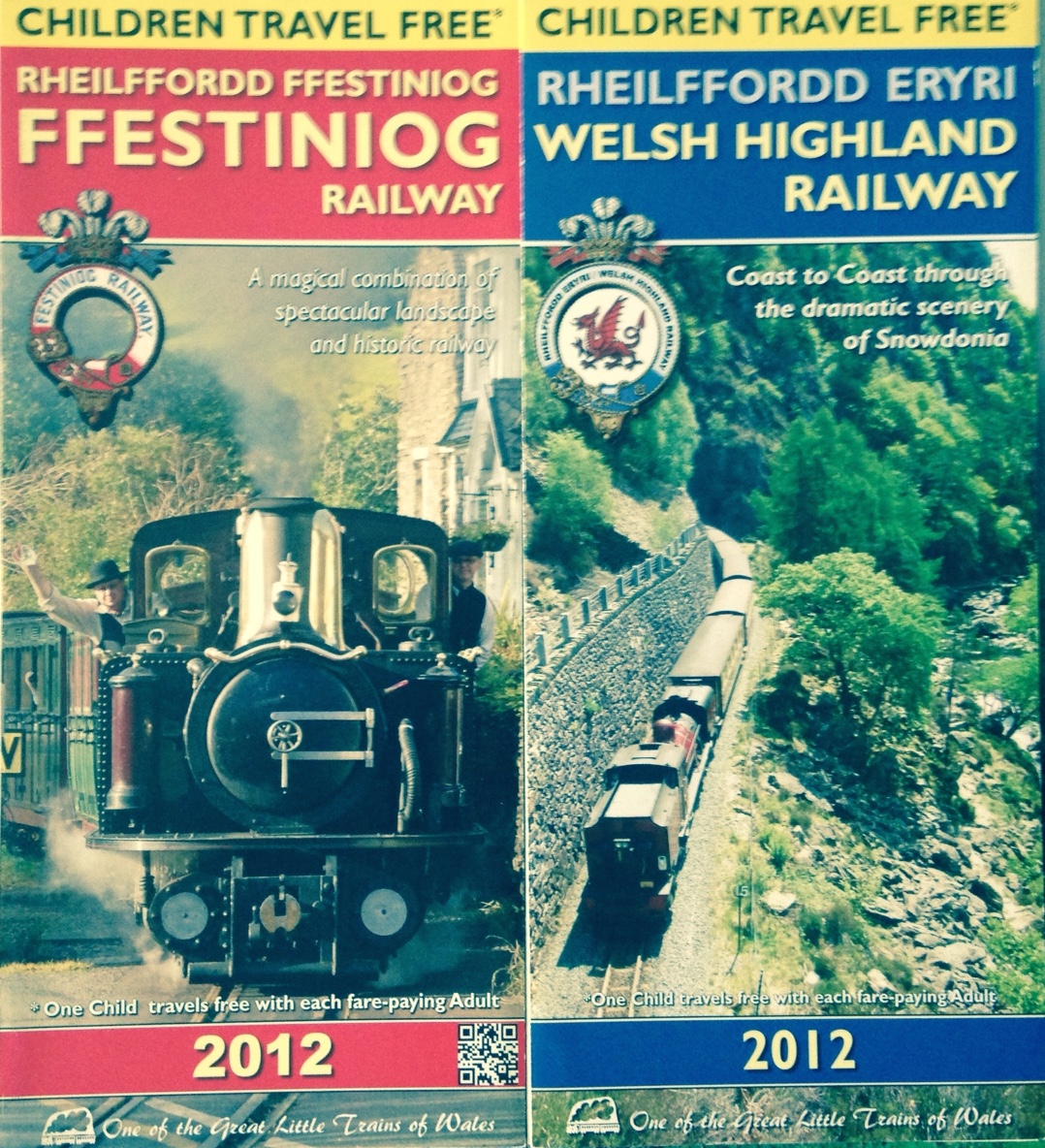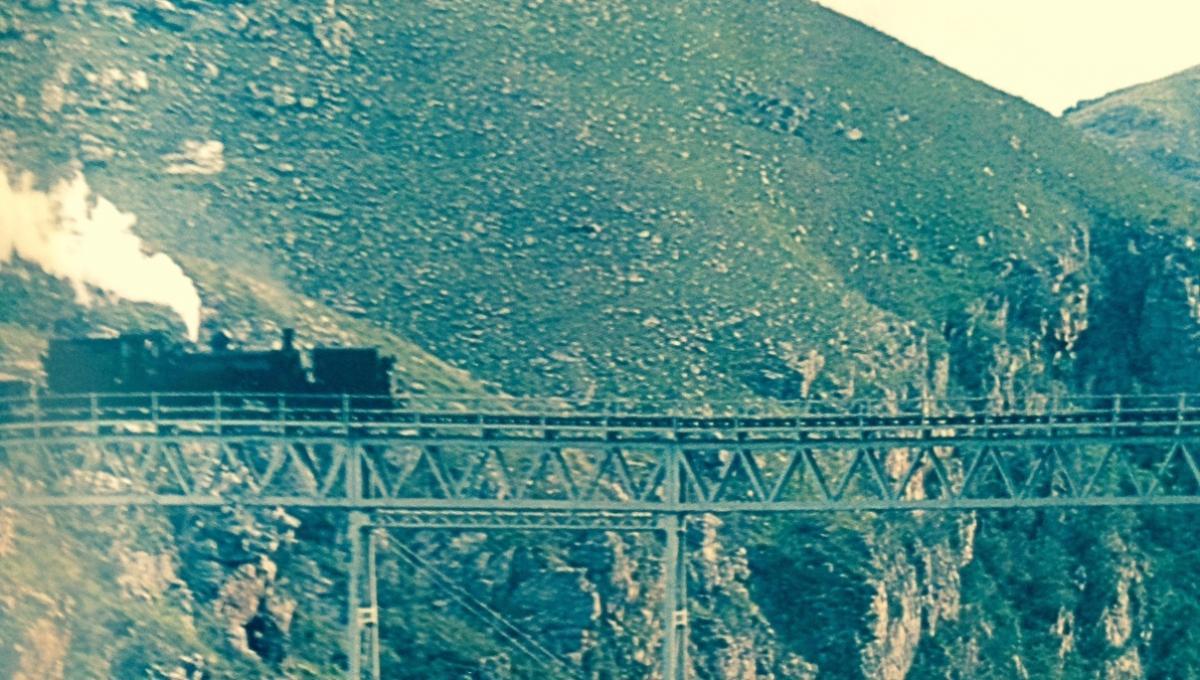
Disclaimer: Any views expressed by individuals and organisations are their own and do not in any way represent the views of The Heritage Portal. If you find any mistakes or historical inaccuracies, please contact the editor.
Peter Ball returns with this fantastic article on narrow gauge railways in South Africa. He believes that the line from Port Elizabeth towards the Langkloof, which can be reopened in stages, is the most viable preservation project in the country and argues that we should look to the Welsh experience over the last sixty years for inspiration.
The story of narrow gauge railways began in Wales when, in 1836, the FESTINIOG RAILWAY was to build a line with a gauge of 1’-11½” (597 mm), for the purpose of carrying slate from the quarries of Blaenau Ffestiniog down to the sea at Portmadoc, a distance of 13 miles (21 km). When operations commenced a horse did the work of pulling the empty wagons back up the hill, while on the downhill journey gravity alone did the job with the horse getting a free ride! In 1863 steam engines were introduced as demand for slate (roofing) increased. The line became famous for its “Double Fairlie” locomotives that had two boilers and a central cab supported by two steam bogies (cylinders, wheels and motion), which were ideal for negotiating the tight curves and powerful enough to climb the steep gradients. The Slate traffic went into terminal decline soon after the Second World War and the line closed in 1946. Grass, bushes and even trees grew up and around the abandoned track, however this was not the end of the line by any means as by the mid 1950’s a group of railway enthusiasts took control and formed “Festiniog Railway Society” which along with the Talyllyn Railway and the Bluebell Railway, was to spawn the railway preservation movement in Britain.
The definition of a Narrow gauge railway is generally a railway that has a gauge less than that of the Standard Gauge (of George Stephenson) of 4’-8½” (1435 mm). Conversely a Broad gauge is wider than Standard. It can therefore be said that the Cape Gauge of 3’-6” (1067 mm) is a narrow gauge however our loading gauge is the same as that of Britain and allows for the movement of heavy loads and hence in the South African context a narrow gauge is something less than Cape Gauge.
Narrow gauge lines became popular world wide at the ending of the nineteenth century, when the initial boom in railway building was over and all the major cities and ports had been linked. Small towns and less prosperous communities realized that without a railway they would increasingly fall behind and therefore clamoured for a railway connection. As the capital could not be raised to build to main line standards cheaper ways had to be found and the narrow gauge railway, despite the inconvenience of a break of gauge, was seen as a cost effective solution. In fact it was only the transhipment of goods that posed a problem, as passengers would usually change trains at a branch-line junction station anyway.
The big plus factor for the narrow gauge was its ability to follow a curving alignment enabling it to hug the contours of the countryside. In so doing it reduced to a minimum the amount of expensive earthworks needed. Furthermore since everything was on a smaller scale the initial cost of rails, engines, carriages and wagons was a lot less.
Narrow gauge railway - Train winding towards for PE packed with fruit - The Great Steam Trek
The first railways, in what is now South Africa, were laid to the Standard gauge (refer to “Ox Wagon to Iron Horse) in Durban and Cape Town, in 1860 and they would later be converted to the Cape Gauge when extensions into the interior were planned. Prior to these extensions (the future Main Lines) a narrow gauge line was planned and built in Namaqualand (1869 to 1876) to provide an outlet to the sea for the export of copper from the Cape Copper Mines at O’kiep, 94 miles (150 km) inland from on the Atlantic coast. The mines were heavily dependent on Cornishmen who had been brought out on contract to work the mines. Cornwall at that time was a world leader in tin and copper mining and would influence mining across the globe and “Cousin Jacks” (Cornishmen) were to be found wherever mining activity was carried out.
Port Nolloth jetty showing method of loading copper ore (A History of Copper Mining in Namaqualand by John M Smalberger)
An Engineer named R. Thomas Hall (late of the Redruth Chasewater Railway in Cornwall) was hired to survey and build the railway to the gauge of 2’-6” (762 mm). He voiced the opinion that “Nothing could be done on a 4’-8” or 3’-6” gauge that could not be done on a 2’-6” gauge”. As it turned out the line always remained isolated from the rest of the railway system and was finally closed in 1944. Interestingly in 1902 the railway was to convey General Jan Smuts and his “Orderly” Deneys Reitz on the first leg of their journey (under safe conduct) to Vereeniging and the convention which led to ending of the Anglo-Boer War.
The 2’-6” gauge was never to gain popularity in the Cape, even though elsewhere in the world it was to be used extensively. A famous practitioner of narrow gauge engineering was Everard R. Calthorp and whilst he was in India, during the 1880’s, he proposed the use of the 2’-6” gauge as being the best for an underdeveloped country, although he was prepared to accept the 2’-0” (610 mm) gauge where traffic was low or the lie of the land was seen to be difficult to cross.
By the end of the nineteenth century the Cape Government Railways (CGR) was considering the 2’-0” gauge for new branch lines that would realise the agricultural potential of the regions north of Cape Town and west of Port Elizabeth (P.E.); the Hopefield and Langkloof railways respectively.
The Langkloof, a long dale which was to the east of the Little Karoo and west of P.E., was a prime candidate for a railway, as it had been farmed since the 1760’s and the soil was fertile. The problem that the farmers faced was the distance and difficulty of getting their produce to the nearest major market of Port Elizabeth. The Gamtoos and Van Stadens rivers were the main obstacles to overcome and prior to the railway’s existence the Langkloof was linked to P.E. by an unpaved road. The Gamtoos was crossed by means of a ferryboat and the Van Stadens by a low level bridge built by Thomas Bain as part of his rebuilding of the Van Standens Pass in 1867 (now the R102).
Train moving across the Van Stadens River Bridge (Railway World Annual 1981)
The railway line was to be 177 miles (285 km) long and would run from P.E. to Avontuur; a cross-roads where the road from Uniondale met the road coming up from Knysna, via the Prince Alfred Pass (built by Thomas Bain from 1863 to 1867) and the road from Humansdorp.
Port Elizabeth to Avontuur (Early Railways at the Cape, Jose Burman)
The Anglo-Boer War (11th Oct 1899 to 31st May 1902) would delay railway building, but once the War was over the project started in earnest, working westwards from P.E. towards the Van Stadens River Gorge; a major barrier in the path of the line. By Christmas 1903 the line was opened as far as the Geduld River, just east of the Gorge and “Specials” were laid on to take sightseers out on day trips. There really was something to see as the Gorge cut through the plain with the river running 250 feet (76 metres) below.
The bridge over the gorge was completed in 1904 and was constructed of riveted structural steel having a total mass of 574 tons. It took the form of horizontal trusses (11 No.) spanning between trestles and it had a total length of 482 feet (197 metres). It was designed to carry loads appropriate for a 3’-6” branch line railway just in case the line was to be widened at later stage (this was never carried out).
The line was opened as far as Humansdorp by the 1st November 1905, after which the line entered the Langkloof and rose steadily from an elevation of 492 feet (150 metres) above sea level to 2 746 feet (837 metres) at Avontuur. The whole line was opened throughout on the 1st January 1907 and the Engineer-in-Chief of the CGR, Alan Grant-Dalton stated that “The railway has had engineering difficulties above the average for a large proportion of its length”.
Closure of the line came in 2011 after 104 years of operation. It succumbed to competition from road haulage which was a consequence of an improved road network (the R62 and N2), which included the building of the Van Stadens high level road bridge (1971) and the deregulation of the road transport industry by the South African Government. After the majority of freight traffic switched to delivery by road the operation of the line was cut back to Loerie, which became the terminus for the “Apple Express” a passenger train put on for tourists. The track is still insitu and there are moves afoot to reopen a certain portion of the line, under private concession, to attract tourism to the Eastern Cape.
A now long forgotten narrow gauge railway called the South Western Railway (SWR) was built to the same 2’-0” gauge, with the hope of an eventual connection at Avontuur and it would run from the wharf at Knysna into the forest to a terminus at Diepwalle, a distance of 22 miles (35 km) and a gain in height of 1 405 feet (above sea level) - see map above. The line was promoted by the local businessmen who wished to extend a horse drawn tramway at the wharf into the forest to facilitate the transport of logs more easily and efficiently. It was ironic that Knysna supplied most of the sleepers (cross-ties) for the Cape Government Railways (CGR), but had no railway to show for it. The sleepers were at the time sent out by ship through the “Heads” to Cape Town or P.E.
The South Western Railway or more affectionally known as the “Coffee Pot” railway (a reference to the small locos used) was authorised under the Cape Government Act No. 16 of 1904 which was passed on the 28th May of that year. It was built by local labour under the supervision of Mr Carl Westveldt, a Swede and completed and duly opened on 14th July 1907. The official opening was graced by the presence of the then Cape Prime Minister, Leander Starr Jameson. In eleven years he had come from opening Raids to opening Rails!
An extension of the SWR northwards from Diepwalle to Avontuur (at the northern end of Prince Alfred’s Pass) was surveyed but never sanctioned. The scheme came to nought but had it done so it would have made an interesting narrow gauge network, linking, as it would have, Knysna with P.E. Instead the 3’-6” gauge George to Knysna branch was approved and opened in 1929.
Natal also had feeder lines built to the 2’-0” gauge all of which have been closed down. One in particular is worthy of mention as it was the subject of a failed bid to save it as a preservation project. The line in question was the Alfred County Railway better known as the “Banana Express” which ran from Port Shepstone (on the Natal South Coast) inland to Harding. Alas the venture which showed much promise, with the prospect of a museum at Paddock Station (a National Monument) has had to close down with very little chance of revival. Its steam locomotive a “Garratt” type, Class NG G16, No. 127 has already been shipped off to Melbourne, Australia (March 2012) to the “Puffing Billy Railway”, a 2’-6” gauge line. The engine will be re-gauged in due course to allow it to run on the railway and is subject to a complete restoration costing Aus$ 2.5 million and is currently in storage at the Menzies Creek Museum.
Bringing the topic right up to date and returning to Wales, the Welsh Highland Railway (Rheilffordd Eryri) has restored the long lost rail link from Caernarfon to Porthmadog (note the change of spelling into Welsh), where it makes a connection with the Ffestiniog Railway (Rheilffordd Ffestiniog). Both lines run close to Snowdonia, an area of outstanding natural beauty, which attracts many visitors from home and abroad. The gauge used is 1’-11½” which is ½” shy of 2’-0” (as makes no difference). Due to the closeness of the gauges South Africa has become a source of historic railway equipment, notably steam locomotives which have been saved from the cutter’s torch and shipped back to Britain, where they were first made. The locos are SAR Class NG G16 2-6-2 + 2-6-2 Beyer-Garratt steam locomotives, eminently suitable to their new home. A sure case of our loss is their gain.
Tourism brochures for the Welsh Railways
The most viable narrow gauge preservation project has to be the line from Port Elizabeth towards the Langkloof, which can be reopened in stages, with the section between Humewood Road P.E. to Thornhill being put back into service for the running of the Apple Express”. The Welsh experience of preserving their “Little Trains of Wales” over the last sixty years should be the blueprint to be followed as it was from small beginnings that the lines have flourished to become the success story they are today."
References and Further Reading
- “The Festiniog Railway” Video narrated by Brian Readhead, Britain’s Railway Heritage series.
- “24 Inches Apart” by Sydney Moir.
- “Early Railways at the Cape” by Jose Burman.
- “Steam in Africa” by A.E. Durrant, C.P. Lewis A.A. Jorgensen.
- “Railways of Southern Africa” by O.S. Nock.
- “Tracing the complex origins of the Knysna line” by Roger Fairfax, RAILWAYS Southern Africa, December 1977.
Comments will load below. If for any reason none appear click here for some troubleshooting tips. If you would like to post a comment and need instructions click here.

